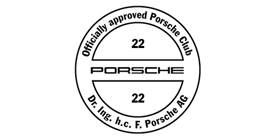You should upgrade or use an alternative browser.
Porsche turbo: Valve timing
- Thread starter George Elliott
- Start date
Apropos the 930 engine timing, the only piece of information I can find is for the original type no 930/50 of 1974:
Inlet opens/closes 20deg btdc/60deg abdc
Exhaust opens/closes 50deg bbdc/18deg atdc
For comparison, the later M64-based 3.6 litre single turbo engine introduced in 1993 used the following timings:
Inlet opens/closes 2deg btdc/54deg abdc
Exhaust opens/closes 43deg bbdc/3deg atdc
An additional factor to bear in mind with the 996/997 water cooled engines (and, I think, with the air cooled M64/60 Bi-Turbo engine used in the 993) is that resonance intakes were introduced which would, no doubt, have led to additional cam matching requirements. And now the latest turbo engine has variable inlet guide vanes to add to the equation..!!
Good luck with your quest.
Jeff
George Elliott
New member
I will add your latest data to my comparison Spreadsheet and try to Post it here tomorrow in case anyone is interested. Its an area I have been curious about for some time.
I was unaware of the turbo cup series cars bhp too Paul, but I notice an interesting thing in the PET where the engine types are shown.
You will be aware the 220bhp engines were designated M44 51 (K26/6), and the 250bhp cars were M44 52 (K26/8). If you look in the PET, there is a reference to a M44 50 series of 400 engines - what were they fitted to I wonder. Could they explain some of the unusual Down pipes which appear from time to time? or the Magnesium Inlet manifolds??
I learned from Johnny that there was a 2.5 16v turbo engine developed before the 944 turbo was introduced, and that engine was run at Le Mans.
I guess its too late in the day for that now, too time consuming to develop, and would not be cost effective.
George
944t
Jonny944CS
New member
ORIGINAL: Diver944
Where did you get the 290bhp figure for the 944 Turbo Cup cars? I was always of the opinion that they used standard 250bhp engines but I'd love to hear different
[
I put the 290bhp figure in as a rough guess upper limit for a late 80's 2.5T, retaining some reliability.
My understanding (and I could be wrong on this) is that factory-prepared 'Turbo-Cup' cars were supplied to US customers for SCCA showroom stock racing. The GT class contained 944 Turbo Cups, Corvettes and the Nissan 300ZX.
The factory saw fit to include several additional parts with the cars. Unfitted and placed in a box in the passenger footwell..., these included a 3bar fuel regulator and 3 different chipsets, mapped to produce roughly 290, 300 and 320bhp, giving options to suit different circuits and race distances. Apparently, feedback from the various race teams pointed to the cylinder head gasket as the main weak point, limiting running in 320bhp trim.
A quote from a book written from the Chevrolet perspective:
"For 1987, Porsche was rumored to have bought a 1986 Corvette and to have thoroughly tested it on the company's Weissach test track in Germany. From this comparison, they developed a 944 Turbo racing package, featuring more power, bigger brakes, and ABS.
Porsche had developed the 944 Turbo as a serious race car for European competition. For the SCCA Showroom Stock Series, the company was only mildly constrained by the rules. It brought whatever it needed to the track, whether it was in production, about to be produced, or experimental.
SCCA bent over backward trying to help Porsche get into the winner's circle. Even though we would complain about the concessions made for Porsche, it was the right thing to do for the racing series. For SCCA and the spectators, having Corvette and Porsche each winning half the time would have been just right. SCCA also had received assurances that the Nissan 300 ZX turbo would return, and that Mazda was also considering entering the series.
Given the concessions that SCCA had made for Porsche, and that the 944 Turbos were as fast or slightly faster than the Corvettes on a straightaway, Corvette felt it had the right to petition SCCA for more freedom in engine preparation. With the improvements that were agreed to, the Corvettes would run at 350-375 hp, which was still down in power from where we expected the turbocharged Porsches to be. But, with the Corvette's excellent torque curve and the better fuel economy of the naturally aspirated engine, we felt this was a reasonable balance, particularly for the longer endurance races."
Jonny944CS
New member
ORIGINAL: Motorhead
An additional factor to bear in mind with the 996/997 water cooled engines (and, I think, with the air cooled M64/60 Bi-Turbo engine used in the 993) is that resonance intakes were introduced which would, no doubt, have led to additional cam matching requirements. And now the latest turbo engine has variable inlet guide vanes to add to the equation..!!
I get the impression that intake tuning is an area that has undergone intense development since the first 4 valve/cyl engines arrived in the mid 80's.
From a low-speed torque perspective; Having a pair of intake valves improves flow into the cylinder, but if the slug of air flowing in does not have enough momentum (due to tuning) when the piston slows down and reverses direction around BDC - and the intake valve is still open (due to timing) - the air has a similarly improved opportunity to flow back out again, reducing volumetric efficiency and therefore torque.
George Elliott
New member
Johnny
If I could copy the analysis onto this Post, you would see that the Cam Timing of the 1994 3.6 964T is very similar to the 951.
Its the most similar of all comparisons, and within 6 degrees for every open / close event.
The big difference on all comparisons, is the Intake opening Timing, but when all is boiled down I have to agree with whoever said that the 951 was not disabled using the Cam.
The 930 from 1974 is so over 10 deg different for every event - you would wonder if it would run at all! A lot was learned between 1974 and 1984 obviously.
Since then, Variable length inlet tracts, Variable Cam timing, and Cam Lift, all combined with 4 Valves per Cylinder, Coil Pack Ignition, Low friction turbo's, Variable Turbine tech, DFI.....I guess time brings progress. Saying that, the problems of scored bores and coked up cylinder heads on modern engines show its not without its side effects.
As an aside, I cut a 2" hole in a spare Snorkle today, just where it connects to the Airbox and to the rear of the car. While the weather is this cold, I want to see if the breathing is improved.
Initial impression - it has not done any harm.......[
I will refit the original to avoid taking (potentially warm/hot) under-bonnet air in March. Or the bonnet may get treated to a small bulge to accomodate a 60mm Duct.
Thanks for all the input.
george
944t
Incidentally, I've looked again at the 993/996/997 twin-turbo installations and stand corrected: I believe that the varioram (993) and resonance intake (996/997) systems were/are used only on the normally aspirated engines. The turbos supply a single throttle valve (via their own intercoolers) after which the charge is fed to the individual inlet manifolds or plenums, one per bank of 3 cylinders.
Of course, with the watercooled engines - fitted with Variocam Plus variable timing and lift - things become much more complicated. Refering to the "Early" and "Late" inlet valve timings for the 996 Turbo to which George has refered in his original thread:
At idle and low engine speeds and loads, the angle variator turns the camshaft to its late base timing, resulting in a small valve overlap for flexible operation and low unburned HC emissions. Low valve lift is employed generating high gas velocity, resulting in low CO emissions.
At light medium loads, the small valve lift is retained but the angle variator turns the camshaft to to early intake timing to provide some overlap and some EGR to lower NOx emissions.
At higher loads and higher engine speeds, the high valve lift and long opening duration cam is employed and the angle variator retains the early valve timing ensuring high power and torque.
Such advancements (and higher degrees of complexity!) introduced over the past 25 years have led to higher specific power outputs, better fuel economy and lower emissions.
Jeff

Posts made and opinions expressed are those of the individual forum members
Use of the Forum is subject to the Terms and Conditions
Disclaimer
The opinions expressed on this site are not necessarily those of the Club, who shall have no liability in respect of them or the accuracy of the content. The Club assumes no responsibility for any effects arising from errors or omissions.
Porsche Club Great Britain gives no warranties, guarantees or assurances and makes no representations or recommendations regarding any goods or services advertised on this site. It is the responsibility of visitors to satisfy themselves that goods and/or services supplied by any advertiser are bona fide and in no instance can the Porsche Club Great Britain be held responsible.
When responding to advertisements please ensure that you satisfy yourself of any applicable call charges on numbers not prefixed by usual "landline" STD Codes. Information can be obtained from the operator or the white pages. Before giving out ANY information regarding cars, or any other items for sale, please satisfy yourself that any potential purchaser is bona fide.
Directors of the Board of Porsche Club GB, Club Office Staff, Register Secretaries and Regional Organisers are often requested by Club members to provide information on matters connected with their cars and other matters referred to in the Club Rules. Such information, advice and assistance provided by such persons is given in good faith and is based on the personal experience and knowledge of the individual concerned.
Neither Porsche Club GB, nor any of the aforementioned, shall be under any liability in respect of any such information, advice or assistance given to members. Members are advised to consult qualified specialists for information, advice and assistance on matters connected with their cars at all times.








